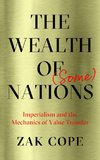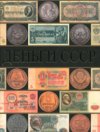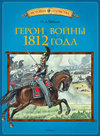
-
 Nemecký jazyk
Nemecký jazyk
Saladin in Europa
Autor: Thomas Steller
Studienarbeit aus dem Jahr 2007 im Fachbereich Geschichte Europa - and. Länder - Mittelalter, Frühe Neuzeit, Note: 1,3, Europa-Universität Viadrina Frankfurt (Oder), Sprache: Deutsch, Abstract: This paper deals with the question in which way Sultan Saladin... Viac o knihe
Na objednávku
16.65 €
bežná cena: 18.50 €
O knihe
Studienarbeit aus dem Jahr 2007 im Fachbereich Geschichte Europa - and. Länder - Mittelalter, Frühe Neuzeit, Note: 1,3, Europa-Universität Viadrina Frankfurt (Oder), Sprache: Deutsch, Abstract: This paper deals with the question in which way Sultan Saladin was perceived by the western world. For a long time his person has sparked a great number of fictional stories dealing with his life. Remarkably he was perceived quite paradoxically in two distinct ways.
Due to the strong Christian perception of history as path to salvation and the Influence of Augustine¿s division of the world in civitas dei and civitas diaboli, the early accounts of his life are quite negative. As a usurper of power he is seen as salahdinus tyrannus. Quite a number of negative images were constructed in order to integrate him in this universalistic worldview. These propagandistic depictions surface immediately after the first contact of Crusaders and Saladin. This reception started at the end of the 12th and lasted until the end of the 13th century. They form as reaction to the catastrophic defeats which the Christians suffer. They are a way to overcome the shock and integrate these defeats in their teleological worldview so that may seem sensible.
A second group of more positive views of Saladin emerged in the 13th until the 15th century. They express a more distanced mentality towards these catastrophic events during the third crusade. Saladins transforms into the ideal noble Knight which exemplifies christian virtues. Again in the medieval historiography and literature the writers tried to integrate Saladin in their worldview.
He stands out in contrast to the very negative and dark images of Islam which are common in Europe in this time. In order to make his good deeds plausible stories about him being a knight or even of christian birth were invented. As in the first group he becomes a western instrument of criticism and propaganda though now in an opposite way. He is merely a reflex of western fears and problems than in any way close to the historic Person. Both groups show the same need to cope with Saladin. He posed a challenge to western Christian moral and religious belief-system. That's why he had to be integrated in a positive or negative way. Afterwards a short sketch of Saladin in the Enlightenment and romantic tradition has been given. In his still ongoing reception Saladin has become a more and more flexible, adaptable symbolic figure which was used in diverse contexts to convey quite different messages. Only the scientific research of the 20th century has tried to portrait an objective picture of Saladin.
- Vydavateľstvo: GRIN Verlag
- Rok vydania: 2011
- Formát: Paperback
- Rozmer: 210 x 148 mm
- Jazyk: Nemecký jazyk
- ISBN: 9783640790364

 Anglický jazyk
Anglický jazyk 




 Ruský jazyk
Ruský jazyk 





